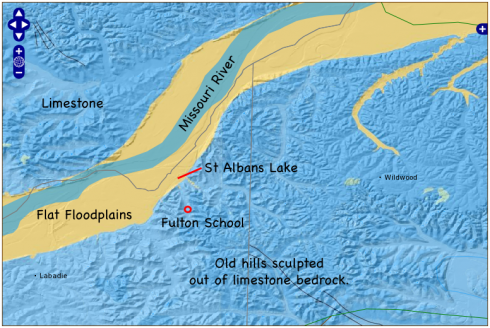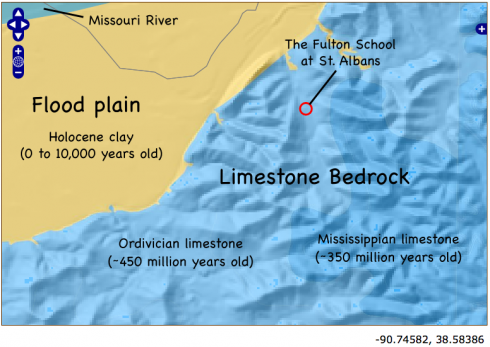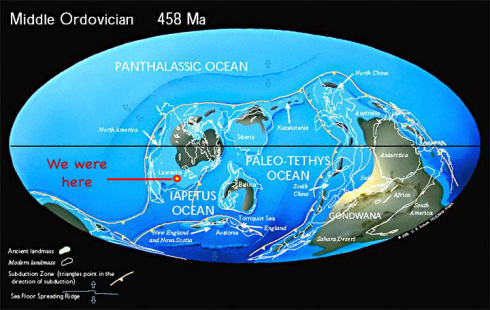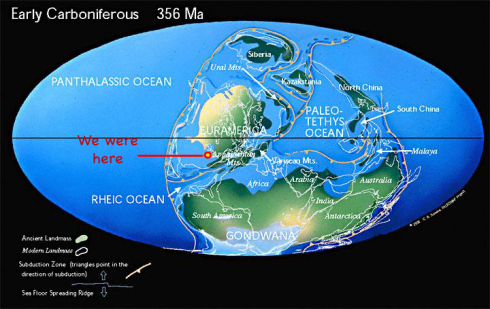The area around the Fulton School has just two types of geology: young, floodplain sediments; and old limestone bedrock.

- Missouri River Flood Plain Sediments:
- Bedrock. Mostly limestone:

Geologic History
The continents form
To reconstruct the geologic history, we can start a bit deeper, with the fact that we’re sitting in the middle of a continent, which means that if you drill deep enough you’ll get to some of the original, granitic rocks that formed just after the crust of the Earth cooled — about four and a half billion years ago.

The continental crust is a bit like the froth that forms on moving water (or the top of boiling jam), and just like froth it tends not to want to sink. So there’s some pretty old continental crust beneath the continents.
However, also just like froth on water, the continental crust is pushed around on the surface of the Earth. This is called continental drift (which is part of the theory of plate tectonics). Sometimes, the continental crust can split apart, making space for seas and oceans between the drifting continents, and causing parts of the continent to subside beneath the oceans.
At other times, such as when two continents collide, they can push each other up to mountains out of areas that were once seas.
And that’s how we ended up with limestone rocks in the middle of Missouri.
Forming Limestone Rocks (Ordovician)
Five hundred million years ago (500,000,000 years ago) the continents were in different places, and Missouri was under a shallow part of the Iapetus Ocean.

Many of the micro-organisms that lived in that ocean made shells out of calcium carbonate.

When you accumulate billions of these shells over the course of millions of years, and then bury them, compress them, and even heat them up a bit, you’ll end up with a rock made of calcium carbonate. We call that type of rock: limestone.

Emerging from the Oceans: The Formation of Pangea.
The Mississippian limestone rocks formed in the same way, but about 360 million years ago. Why is there a gap between the Ordovician rocks (450 million years ago) and the Mississippian ones? Good question. You should look it up (I haven’t). There may have been rocks formed between the two times but they may have been eroded away.
I can make a good guess as to why there are no limestone rocks younger than about 300 million years old, however. At that time the continents, which had been slowly sidling toward each other, finally collided to form a super-continent called Pangea.
What would become North America (called Laurentia), ran into the combined South America/Africa continent (called Gondwana) pushing up the region, and creating the Ozarks and Appalachian Mountains.

And that’s the story the geology can tell.
References
The USGS has good, detailed, interactive maps of the geology of the states in the US.
A nice geologic map of St. Louis County can be found here.
A geologic time scale from the USGS.
